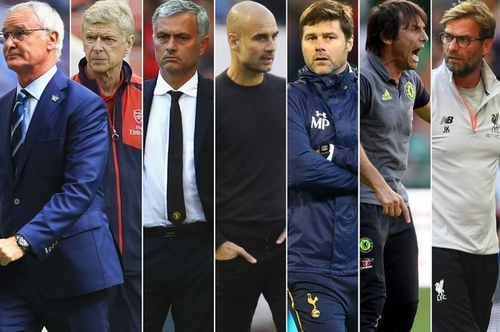At the helm of every successful team stands a coach, orchestrating the players and shaping their strategies. Today, we delve into the world of elite football coaching, unveiling the tactics employed by the best in the game.
Formation Fluidity: Adapting to the Opposition
Modern football transcends rigid formations. Elite coaches understand the importance of formation fluidity, adapting their team’s shape to exploit opponent weaknesses and maximize their strengths. This involves:
- Hybrid formations: Blending elements of different formations to create unique tactical setups. For example, a team might utilize a 4-3-3 base formation in possession, but shift to a 4-4-2 without the ball to strengthen defensive solidity.
- Mid-game adjustments: Responding to the flow of the game by switching formations or tweaking player roles. This might involve introducing a more attacking player if chasing a goal or bolstering the midfield to control possession.
Positional Play: Orchestrating Movement and Space
Positional play emphasizes creating superiorities in key areas of the field through coordinated movement and spacing. This tactical approach focuses on:
- Creating triangles and diamonds: Players position themselves to offer multiple passing options, facilitating ball circulation and breaking down defensive structures.
- Third-man movements: Utilizing decoy runs and quick passing combinations to exploit space behind the opposition’s defensive line.
- Overloads: Concentrating players in specific areas of the field to create numerical advantages and overwhelm the opponent.
Pressing Strategies: Disrupting the Opponent’s Build-up
High-intensity pressing has become a cornerstone of modern football tactics. Elite coaches employ various pressing strategies to disrupt the opponent’s build-up play and win possession high up the field:
- Gegenpressing: Immediately pressing the opposition after losing possession to win the ball back quickly and launch a counter-attack.
- Zonal pressing: Players press based on their position and the location of the ball, coordinating their movements to close down passing lanes and force the opponent into errors.
- Man-marking: Assigning specific players to mark key opposition players, preventing them from receiving the ball and influencing the game.
Transition Play: Capitalizing on Key Moments
Transitions – the moments between attack and defense – present crucial opportunities to gain an advantage. Elite coaches emphasize:
- Counter-attacking: Quickly transitioning from defense to attack after winning possession, exploiting the opponent’s disorganization to create scoring chances.
- Counter-pressing: Immediately pressing the opposition after losing possession to prevent them from launching a counter-attack.
- Rest defense: Maintaining defensive structure during attacking phases to prevent being caught out of position during transitions.
Set-Piece Specialization: Turning Dead Balls into Goals
Set pieces – free kicks, corners, and throw-ins – offer valuable scoring opportunities. Elite coaches dedicate significant time to:
- Designing creative routines: Developing innovative set-piece plays to exploit opponent weaknesses and create scoring chances.
- Practicing specific roles: Assigning players specific roles during set pieces, such as blockers, targets, and decoy runners.
- Analyzing opponent tendencies: Studying the opponent’s set-piece defending strategies to identify weaknesses and exploit them.
Mental Conditioning and Team Culture: Building a Winning Mentality
Elite coaches recognize the importance of mental conditioning and fostering a winning team culture. This involves:
- Building team spirit: Cultivating a strong sense of unity and camaraderie among players.
- Developing mental resilience: Equipping players with the mental fortitude to overcome challenges and setbacks.
- Promoting a positive learning environment: Encouraging open communication, feedback, and continuous improvement.
Data Analytics and Technology: Leveraging the Power of Information
Modern football coaching embraces data analytics and technology to gain a competitive edge. This includes:
- Performance analysis: Using data to track player performance, identify areas for improvement, and make informed decisions.
- Video analysis: Studying match footage to analyze opponent tactics and develop counter-strategies.
- Wearable technology: Utilizing GPS trackers and other wearable devices to monitor player fitness, workload, and movement patterns.
Elite football coaching is a multifaceted discipline, requiring a deep understanding of tactics, psychology, and technology. The coaches who master these elements, creating a harmonious blend of strategy, motivation, and innovation, are the ones who consistently lead their teams to victory.





